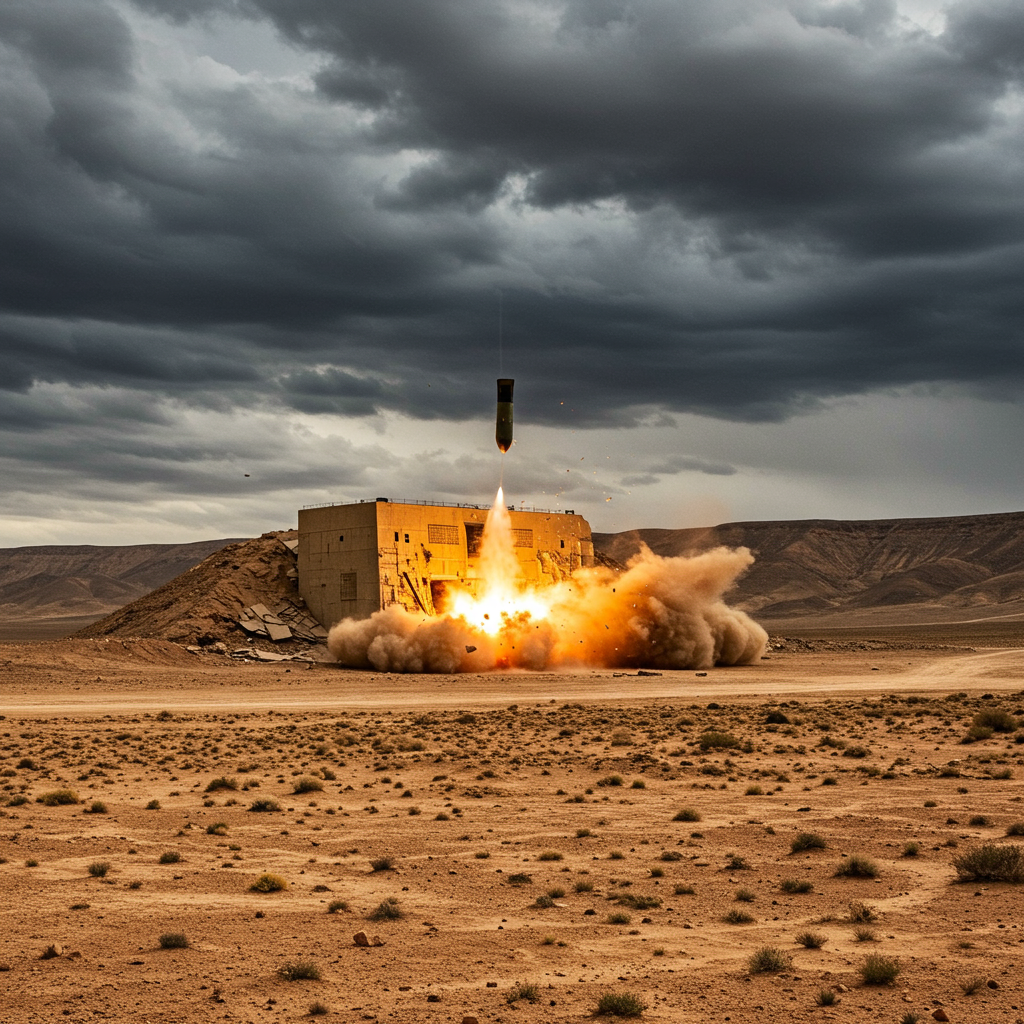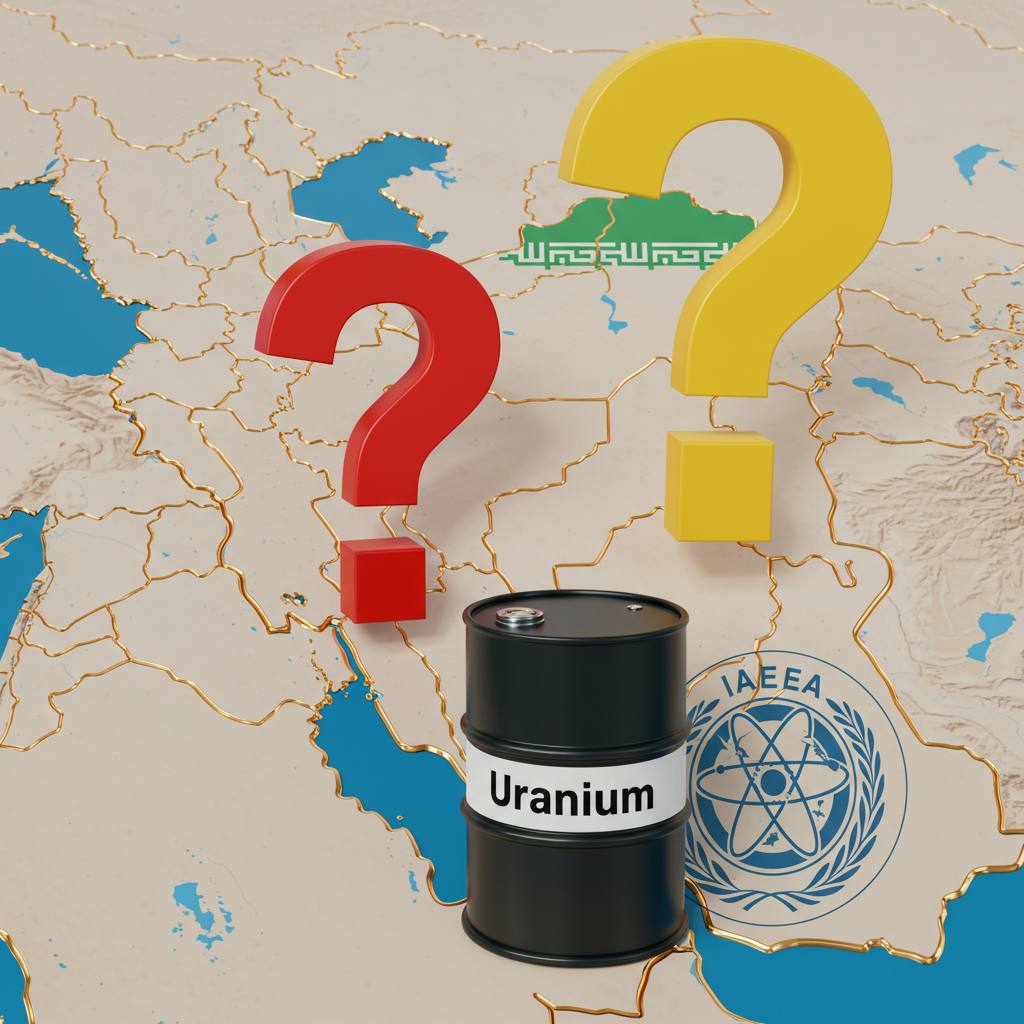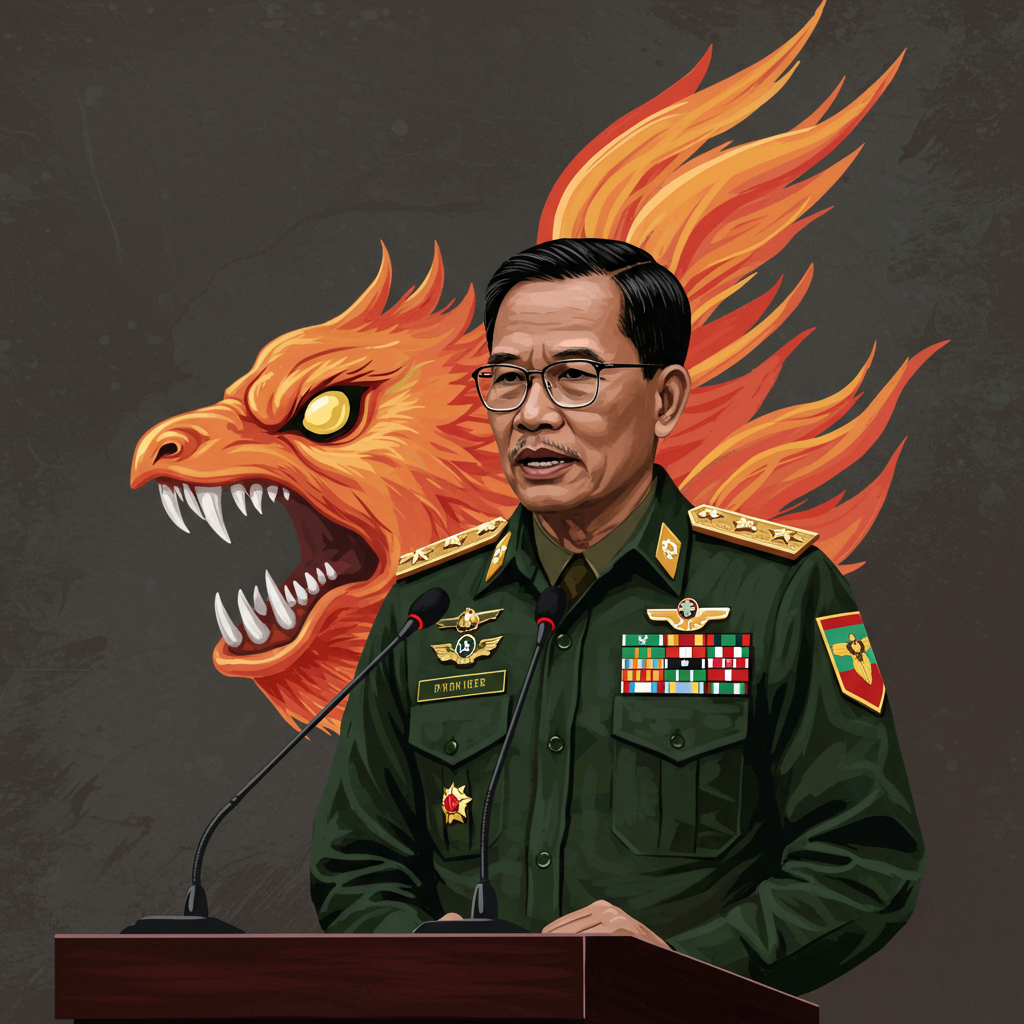In a significant escalation following weeks of regional tensions, the United States launched direct strikes on key Iranian nuclear facilities on June 22, 2025. Among the principal targets were the Natanz and Isfahan sites, but particular attention focused on Fordow, a facility believed to be beyond the reach of conventional airstrikes. The decision to involve the US directly, especially concerning Fordow, came after Israel appealed for American assistance, highlighting the unique challenge posed by the site’s deep fortification and the specialized weaponry required to neutralize it.
What is Iran’s Fordow Nuclear Site?
Located northeast of Qom and reportedly buried deep under a mountain, the Fordow Fuel Enrichment Plant is one of Iran’s most sensitive nuclear facilities. Designed to house thousands of centrifuges, its underground location makes it exceptionally difficult to target effectively with standard munitions. The site’s primary purpose is uranium enrichment, a crucial step in producing fuel for nuclear reactors or, potentially, weapons-grade material. International concerns about Fordow intensified after the International Atomic Energy Agency (IAEA) reported finding uranium enriched to levels as high as 83.7% – just shy of the roughly 90% purity needed for a nuclear weapon.
Why Israel Pushed for a US Strike on Fordow
Following extensive strikes by Israel aimed at degrading Iran’s air defenses, missile capabilities, and nuclear infrastructure, it became apparent that Fordow’s deep underground position rendered it largely impervious to Israeli airstrikes. Preventing Iran from acquiring nuclear weapons is a stated top priority for Israel, and the high enrichment levels found at Fordow made disabling this facility critical.
Recognizing the limitation, Israel reportedly appealed to the United States for the use of its most powerful conventional bunker-busting bomb: the GBU-57 Massive Ordnance Penetrator (MOP). Weighing approximately 30,000 pounds, the GBU-57 is designed to penetrate significant depths of earth or reinforced concrete – potentially up to 200 feet (61 meters) – using its sheer weight and kinetic force before detonating. Crucially, this specialized bomb can only be delivered by the US Air Force’s B-2 stealth bomber, making American intervention necessary if Fordow was to be effectively targeted. The ability to drop multiple GBU-57s sequentially was seen as a way to potentially achieve even deeper penetration.
The US Strike: Bunker Busters and Missiles
On June 22, the US confirmed strikes on Iranian nuclear sites, including Fordow, Natanz, and Isfahan. President Donald Trump announced the attacks, describing them as a “spectacular military success” aimed at the “obliteration” of Iran’s key enrichment facilities.
According to reports, B-2 bombers were involved in delivering bunker-buster bombs. While numbers vary, some reports indicate that multiple GBU-57s were dropped on Fordow. Additionally, other sites like Natanz and Isfahan were targeted with dozens of Tomahawk cruise missiles, reportedly fired from a US submarine. US officials claimed the operation, which involved over a hundred aircraft and dozens of precision bombs, was the largest B-2 operation in US history and was not detected by Iran until after it concluded. The strikes marked the first reported combat use of the powerful GBU-57 Massive Ordnance Penetrator.
Claims of Success vs. Iranian Counter-Claims
Following the strikes, President Trump asserted that the objective of destroying Iran’s nuclear enrichment capacity had been achieved. Israeli Prime Minister Benjamin Netanyahu praised the US action, calling it an exercise of “awesome and righteous might” that would “change history” and something “no other country on Earth could do,” highlighting the close coordination between the two nations.
However, Iranian media later acknowledged that parts of the Fordow site had been “attacked by enemy strikes” but offered a different narrative regarding the damage. Iranian officials claimed they had anticipated strikes on Fordow and evacuated the facility in advance, asserting that “no irreversible damage” was sustained. The Atomic Energy Organization of Iran (AEOI) stated that environmental surveys showed “no contamination recorded” and “no danger to residents,” vowing that their nuclear work would continue. The IAEA also reported finding “no increase in off-site radiation levels” near the sites and announced an emergency meeting to discuss the situation.
The Uncertainty Surrounding Fordow’s Fate
Despite President Trump’s claims of obliteration, the true extent of the damage inflicted on Fordow remains uncertain due to its heavy fortification. It is likely to take days, if not longer, for a clear picture of the impact to emerge. Compounding this uncertainty is the debate among experts, with some defense officials reportedly having privately warned that even multiple GBU-57s might not penetrate deep enough to achieve complete destruction, potentially only causing tunnel collapses and burying the facility under rubble rather than truly destroying its core infrastructure.
Differing Views on Iran’s Nuclear Program
The strikes occurred amidst a long-standing international dispute over Iran’s nuclear program. Tehran consistently maintains its program is for entirely peaceful purposes. This stands in contrast to assertions from the US and Israel that Iran is actively pursuing or could quickly assemble a nuclear weapon, posing an imminent threat. Notably, US intelligence agencies had previously assessed that Iran was not actively building a bomb, although this assessment has been challenged by recent political statements.
Global Reactions and Fears of Escalation
The US strikes on Iran’s core nuclear facilities triggered a wave of international reactions, predominantly marked by alarm and calls for restraint.
The United Nations Secretary-General expressed grave alarm, warning of a “dangerous escalation” with potential “catastrophic consequences.”
Russia strongly condemned the strikes as “irresponsible” and a “gross violation of international law,” predicting a dangerous undermining of regional security.
European nations generally urged de-escalation and a return to diplomatic efforts, although the UK offered cautious, conditional support while emphasizing the need to prevent Iran from developing nuclear weapons.
In the Middle East, reactions varied. Saudi Arabia voiced “great concern,” while Iraq and Qatar warned the strikes risked destabilizing the region. Pakistan issued a condemnation.
Iran’s allies, such as Yemen’s Houthi movement and Hamas, forcefully denounced the US action as “blatant aggression” aimed at supporting Israel and vowed continued resistance.
Israel, in contrast, universally applauded the strikes as a necessary measure against an existential threat.
Fears of regional escalation are significant. Potential Iranian retaliation could include direct attacks on US forces in the region, targeting US bases in Iraq via proxy militias, disrupting global shipping lanes (impacting oil prices), or escalating its nuclear program further, potentially by withdrawing from the Non-Proliferation Treaty (NPT). Iran’s Foreign Minister condemned the US action as a “grave violation” and “criminal behavior,” threatening potential NPT withdrawal and reserving all options for self-defense. President Trump subsequently issued a warning that any Iranian retaliation would be met with “force far greater.”
The US strikes represent a pivotal moment, directly targeting facilities central to Iran’s nuclear capabilities, spurred by Israel’s need to overcome the challenge of Fordow’s fortifications using unique American weaponry. However, the full impact on Iran’s program and the ultimate consequences for regional stability remain dangerously uncertain.




